experimental music 1938 to the present
gray area grand theater
2665 mission st san francisco
$15 [$10 underemployed] each concert
$30 festival pass
underemployed tickets only available at the door
box office/doors open one hour before concert start time
PURCHASE TICKETS
< back
SUNDAY JULY 10 2016 8PM [doors 7pm]
PROGRAM
PIERRE BOULEZ - Domaines (1968/1969)
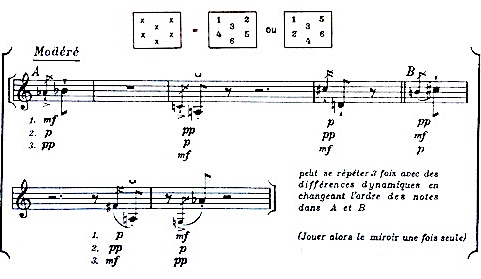
MATT INGALLS, solo clarinet with 6 ensembles:
1. JESSE CANTERBURY, bass clarinet
2. KJELL NORDESON, marimba . SCOTT WALTON, double bass
3. KYLE BRUCKMANN, oboe . ARMANDO CASTELLANO, horn . GIACOMO FIORE, electric guitar
4. BRENDAN LAI-TONG, alto trombone . HALL GOFF, tenor trombone . DON KENNELLY, tenor trombone . SCOTT THORNTON, bass trombone
5. DIANE GRUBBE, flute . KEVIN MCLAUGHLIN, trumpet . JOHN INGLE, alto sax . SHAWN JONES, bassoon . EMILY LAURANCE, harp . MONICA SCOTT, conductor
6. BENJAMIN KREITH, violin . ERIK ULMAN, violin . LINDA GREEN, viola . DEREK KATZ, viola . DYLAN MATTINGLY, cello . MONICA SCOTT, cello . JOHN INGLE, conductor
more info
As a composer, Pierre Boulez followed a trajectory common to his generation; that is, from twelve-tone organization through integral serialism to open forms. Drawing upon influences ranging from Symbolist poet Stéphane Mallarmé to American musical anarchist John Cage, Boulez explored the notion that musical form could be variable or open-ended. As a man of mathematical training, though, he abhorred imprecision, so these experiments were always carefully controlled. Domaines, which was pieced together between 1961 and 1968, is one of Boulez's most extensive examples of what is best described as mobile form.
Scored for solo clarinet and six instrumental groups of different sizes, Domaines consists of two parts, Original and Miroir (Mirror). Each part is comprised of six sections Boulez calls cahiers. Each solo cahier contains six segments that can be played in two different arrangements. In addition, many of these segments are built from motives and fragments containing six notes, rhythms, or gestures. The Miroir part is also linked quite directly to the Original, the sections and segments consisting of material drawn from the corresponding portion of the Original, played in retrograde.
The clarinet soloist chooses the order of the six Original cahiers, the corresponding ensemble responding after each with its cahier. In the second half of the composition, the Miroir cahiers are also presented in alternating fashion, but with the ensemble performing before the soloist.
Born in Montbrison/Loire on March 26, 1925, PIERRE BOULEZ was a composer, conductor, thinker, and emblematic figure in post-war European and world culture. He was a living classic. Ever since the 1950’s, composers around the world followed with curiosity what he was writing, to see if they could adapt his ideas in their own music or to reject them in their search for an idiom they could call their own.
Originally a student of mathematics, he later studied with the composer and organist Olivier Messiaen at the Paris Conservatory. Inspired by the works of Anton Webern, in the 1950s he began to experiment with total serialism; his serialist music is marked by a sensitivity to the nuances of instrumental texture and color. In 1954 he founded a series of avant-garde concerts, the Domaine Musicale. By the 1960s he had gained an international reputation not only as a composer but also as a conductor, particularly of the 20th-century repertoire. He was chief conductor of the BBC Symphony Orchestra (1971-74) and the New York Philharmonic (1971-78) and guest conductor of symphonies and opera companies around the world.
In his compositions but also in his writings, Boulez was initially an angry and rebellious young man (see his scathing obituary Schönberg est mort). With the passage of time as he became an established figure, with France inviting him back to found IRCAM (1977) and the Ensemble Intercontemporain (1972). Boulez also was a highly influential teacher. In Lucerne he passed on his immense knowledge to fledgling conductors at the Festival Academy.
Pierre Boulez died on 5 January 2016 in Baden-Baden.
MORTON FELDMAN - Marginal Intersection (1951)
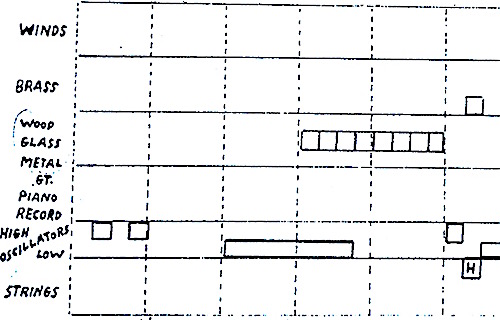
sfSoundORCHESTRA with THOM BLUM, oscillators and sound effects of riveting
more info
Morton Feldman’s early Projections and Intersections pieces, written between 1950 and 1953, are a series of graphical “box notation” compositions in which time is represented by space, and in which the spaced boxes specify only instrument, register, number of simultaneous sounds, mode of production, and duration. The two series differ in that the Projections are to be consistently quiet, while in the Intersections "the player is free to choose any dynamic at any entrance but must maintain sameness of volume' - though 'what is desired in both ... is a pure (non-vibrating) tone."
Marginal Intersection is Feldman’s second work for a large ensemble notated with this graphical system. In this composition, musicians are free to play a single event within the time bracketed by a box on the score, foreshadowing Cage’s late-career “number pieces.” It is scored for winds, brass, strings, guitar, piano, percussion (wood/glass/metal), two oscillators, and a sound effects recording of riveting. For the premiere at Cooper Union, Feldman used his mother’s plastic dishes and old heavy aluminum pots and pans, trying to emulate sounds from “Gamelan Orchestra, John Cage's early forties pieces, and Varèse's work, where the instruments were used en masse, not soloistically…I remember wanting the percussion to sound more like noise. I used ‘found objects’ for sound sources.”
Feldman was soon dissatisfied with the amount of freedom these works gave the performer. Rather than giving freedom to the individual, Feldman instead wanted to find a way to free the music itself. To this end, he returned to traditional notation in 1953.
MORTON FELDMAN - Out of “Last Pieces” (1961)
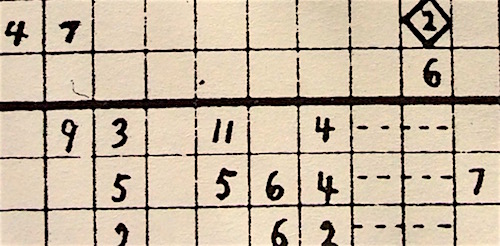
sfSoundORCHESTRA
more info
Feldman's return to graph music in the late 1950's and early 1960's was marked initially by a renewed simplicity in his choice of symbols: numbers (signifying the number of notes to play in the given time segment) dominated the grid frames, compound symbols were rare or absent, and no attempt was made to divide cells into pitch ranges. Out of 'Last Pieces' (1961) however introduces new symbols for harmonics, simultaneous sounds, and sustained notes. It also includes an excerpt of traditional notation: grace notes and a grand staff for the piano at the end of the piece.
The major difference musically to the earlier box notation works is one of density. With the large number of notes that are often sustained, Out of 'Last Pieces' becomes a dense work, bordering on frantic. Playing and listening to the piece is reminiscent of modern-day improvisation, but Feldman was never really interested in inspiring improvisational creativity from his musicians -- or for that matter to come up with scores-as-art as Brown and Cage created. Instead, he wanted to fix an idea as completely as possible. "The new structure," he wrote, "required a concentration more demanding than if the technique were that of still photography, which for me is what precise notation has come to imply." That concern for precision was one of the reasons Feldman could not go along with Cage's dictum that "everything is music", and it was also one of the reasons he returned to conventional notation in the 60s, never returning to graphic notation.
A major figure in 20th-century music, MORTON FELDMAN (1926–1987) was a pioneer of indeterminate music, a development associated with the experimental New York School of composers that also included John Cage, Christian Wolff, and Earle Brown. Feldman's works are characterized by notational innovations that he developed to create his characteristic sound: rhythms that seem to be free and floating; pitch shadings that seem softly unfocused; a generally quiet and slowly evolving music; recurring asymmetric patterns. His later works after 1977 begin to explore extremes of duration, often in one continuous movement, rarely shorter than half an hour in length and often much longer.
EARLE BROWN - Available Forms I (1961)

DIANE GRUBBE, flute . KYLE BRUCKMANN, oboe . PHILLIP GREENLIEF, clarinet . JESSE CANTERBURY, bass clarinet . JOHN MCCOWN, contrabass clarinet . JOHN INGLE, alto saxophone . ARMANDO CASTELLANO, horn . KEVIN MCLAUGHLIN, trumpet . BRENDAN LAI-TONG, trombone . SCOTT SILES + MARK CLIFFORD, percussion . EMILY LAURANCE, harp . ANNE RAINWATER, piano/celeste . BENJAMIN KREITH + ERIK ULMAN, violins . DEREK KATZ, viola . MONICA SCOTT, cello . SCOTT WALTON, double bass . MATT INGALLS, conductor
more info
Although Earle Brown’s December 1952 was to become the iconic work of early graphic notation, Brown never was a composer of graphic music per se. He was much more interested in creating compositions that embraced extreme variability while maintaining an identity for the piece in question. As Brown himself explained: “There must be a fixed (even flexible) sound content to establish the character of the work, in order to be called ‘open’ or ‘available’ form. We recognize people regardless of what they are doing or saying or how they are dressed if their basic identity has been established as a constant but flexible function of being alive.”
The key work for such a conception is Available Forms I of 1961, which represents a plateau or synthesis of his direction in the later fifties, only this time attempting to bring the conductor of an ensemble into a different relationship with the players. The score consists of six loose pages with four or five numbered musical "events" on each page -- in other words, "available forms." In performance, these numbered events may occur in any order, according to the discretion of the conductor. The conductor cues each new event by gesturing with the appropriate number of fingers. In devising the pliable structures of Available Forms, Brown was particularly influenced by the mobile sculptures of Alexander Calder.
“When time (rhythm, tempo, continuity, rests, holding a note, repeats), volume, succession, and juxtaposition are variable, the form must be left open, so that various potentials can be realized (feedback between the sound events, which are malleable objects open to infinite combinatory possibilities, and the conductor/performer . . . who becomes akin to Mallarmé’s Operator).” This idea of “events” emphasizes a strong connection with the painters at that time, to whom Brown was introduced by his friend Morton Feldman. The idea of a kind of “now-ness” is associated with the Abstract Expressionist painters as well as, in a different way, Cage. Brown recalls an entry in his notebooks from 1951–2: “. . . want to get the time of composing closer to the time of performing.” This is not, as is often misunderstood of open form scores, an unrehearsed chaotic spontaneity unleashed in performance, but a careful preparation of events, with elasticity and variability in mind, resulting in surprising juxtapositions and assemblages.
Available Forms I was commissioned by the City of Darmstadt, with Bruno Maderna conducting the premiere. Brown followed this composition with Available Forms II at the 1962 Venice Biennale for 98 instruments, two orchestras and two conductors.
EARLE BROWN (1928-2002) was a major force in contemporary music and a leading composer of the American avant-garde. He was associated with the experimental composers John Cage, Morton Feldman, and Christian Wolff who, with Brown, came to be known as the New York School. He was born in 1926 in Lunenburg, Massachusetts and, in spirit, remained a New Englander throughout his life. Like other artists from that region – Ives, Ruggles, Dickinson – he spoke with his own voice and found his own path. To America, these artists were iconoclasts, but to Europe they embodied America – and Brown was no exception: his music has been most frequently performed, studied, lauded, and revered by Europeans. Brown’s interest in a broad range of aesthetic expressions, ranging from the writings of James Joyce and the poetry of Gertrude Stein, Kenneth Patchen, and others to the work of the Abstract Expressionist painters – and particularly Jackson Pollock and Alexander Calder – informed his own work. He said, as recently as in 2000, that “the earliest and still predominant influences on my conceptual attitude toward art were the works of Alexander Calder and Jackson Pollock...the integral but unpredictable ‘floating’ variations of a mobile, and the contextual ‘rightness’ of the results of Pollock’s directness and spontaneity in relation to the materials and his particular image of the work…as a total space (of time).”
Earle Brown’s influence on the avant-garde community has been philosophical as well as tangible and practical. His conducting techniques and experiments with “time notation,” improvisation, and open-form compositional structure have become part of contemporary compositional usage. Among Brown’s most frequently performed and reinterpreted works is December 1952, the score of which is a stark, abstract series of floating rectangles – a musical equivalent to a Calder mobile. His early influential orchestral scores include Available Forms 1 and Available Forms 2, and his musical friendships were legendary, from Bruno Maderna who conducted first performances of many of Brown’s works to jazz musicians such as Zoot Sims and Gerry Mulligan.
PAULINE OLIVEROS - The Inner/Outer Sound Matrix (for sfSound) (2007)
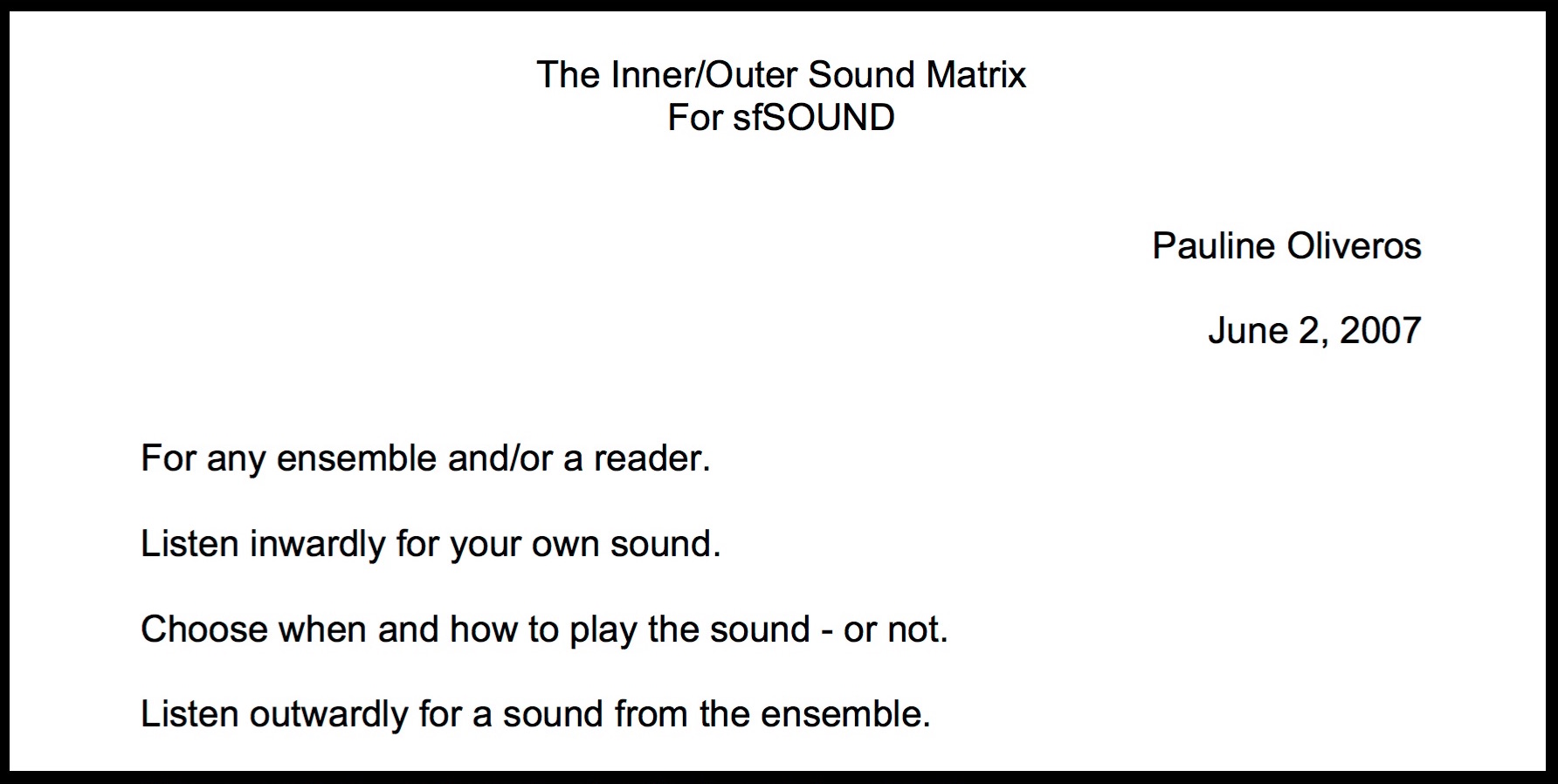
sfSoundORCHESTRA
more info
The Inner/Outer Sound Matrix was written for sfSound in 2007 as part of our first "small packages" project. For this installment, sfSound performed Anton Webern's Concerto op. 24 and commissioned 20 local composers to write 3 minute response (undefined) for the group. A structured improvisatory "text instruction" score, the piece asks the performer to "Listen inwardly for your own sound. Choose when and how to play the sound - or not. Listen outwardly for a sound from the ensemble. Choose when and how to play that sound - or not." Upon revising the work, Oliveros changed the duration specification to 12 minutes, yet "the duration of the piece does not have to be measured. The duration can be free."
PAULINE OLIVEROS - Sound Patterns (1961)
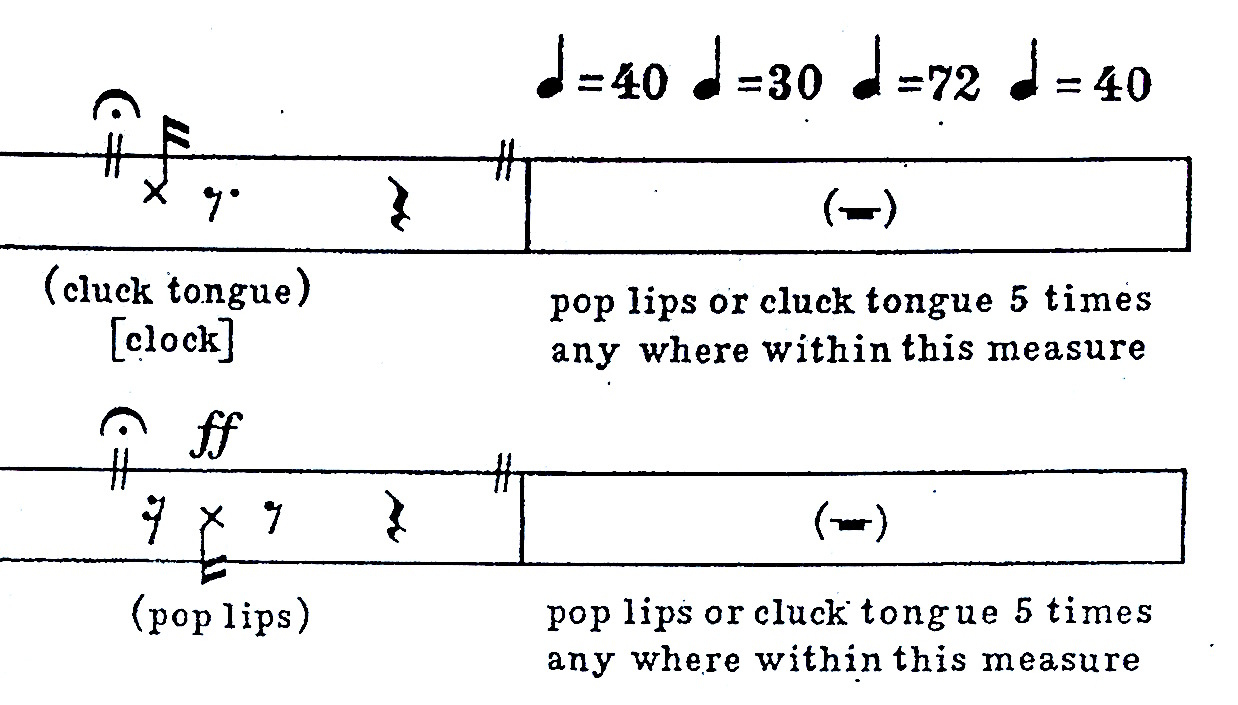
sfSoundORCHESTRA, voices . JOHN INGLE, conductor
more info
Sound Patterns is a musical piece for a cappella mixed chorus by Pauline Oliveros. Rather than a traditional text, the work is constructed of phonetic sounds chosen on the basis of their timbre. The sounds may be understood to reflect Oliveros' interest in electronic music, which she had recently begun to work with. It is Oliveros' "most carefully composed piece" and features only one measure of controlled improvisation linking the development to the recapitulation.
Oliveros won the Gaudeamus International Composers Award in 1962 with this work.
PAULINE OLIVEROS is a senior figure in contemporary American music. Her career spans fifty years of boundary dissolving music making. In the '50s she was part of a circle of iconoclastic composers, artists, poets gathered together in San Francisco. Recently awarded the John Cage award for 2012 from the Foundation of Contemporary Arts, Oliveros is Distinguished Research Professor of Music at Rensselaer Polytechnic Institute, Troy, NY, and Darius Milhaud Artist-in-Residence at Mills College. Oliveros has been as interested in finding new sounds as in finding new uses for old ones -- her primary instrument is the accordion, an unexpected visitor perhaps to the musical cutting edge, but one which she approaches in much the same way that a Zen musician might approach the Japanese shakuhachi. Pauline Oliveros' life as a composer, performer and humanitarian is about opening her own and others' sensibilities to the universe and facets of sounds. Since the 1960's she has influenced American music profoundly through her work with improvisation, meditation, electronic music, myth and ritual. Pauline Oliveros is the founder of "Deep Listening," which comes from her childhood fascination with sounds and from her works in concert music with composition, improvisation and electro-acoustics. Pauline Oliveros describes Deep Listening as a way of listening in every possible way to everything possible to hear no matter what you are doing. Such intense listening includes the sounds of daily life, of nature, of one's own thoughts as well as musical sounds. Deep Listening is my life practice," she explains, simply. Oliveros is founder of Deep Listening Institute, formerly Pauline Oliveros Foundation, now the Center For Deep Listening at Rensselaer.
SFSOUNDGROUP - Improvisation (2016)
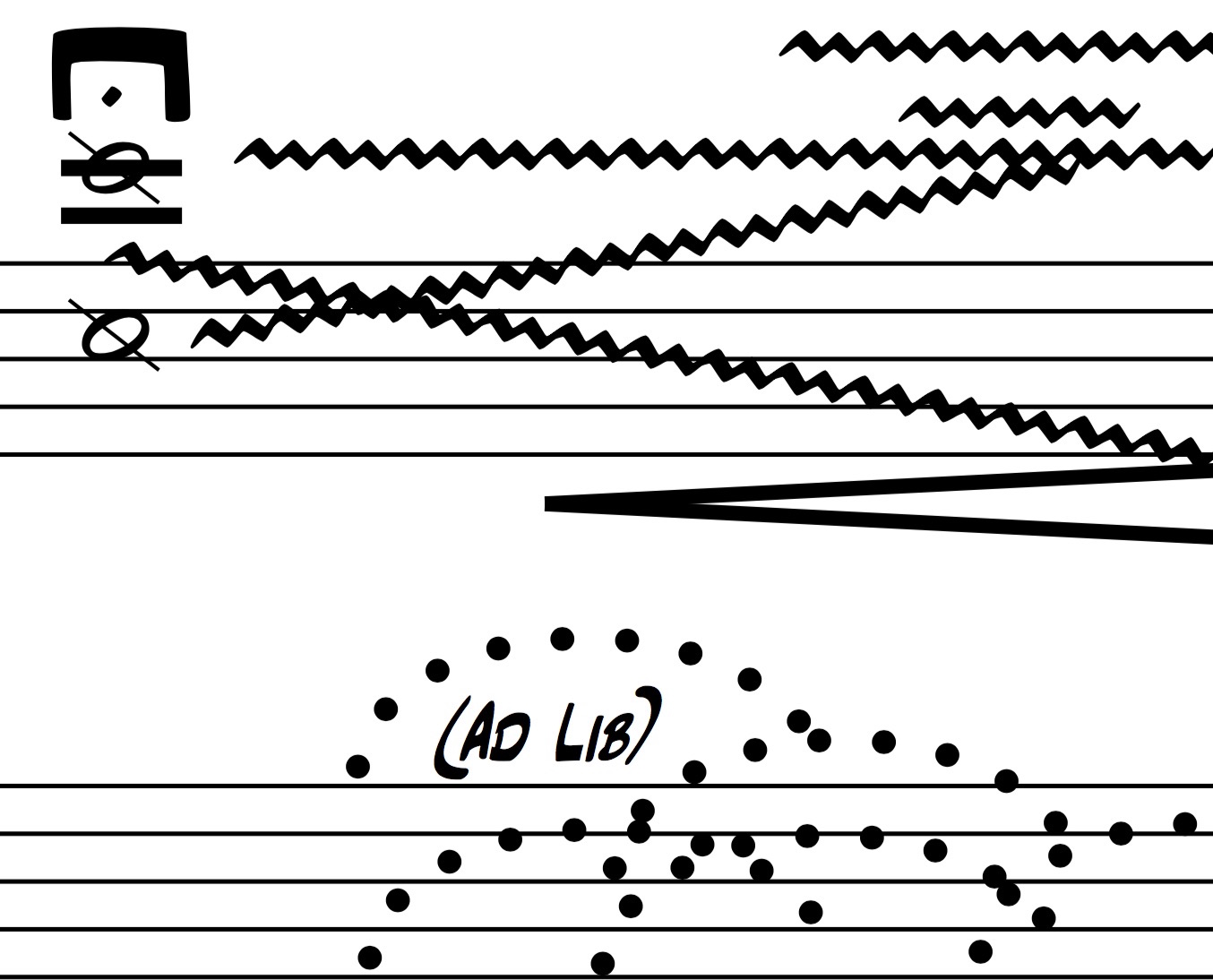
JOHN INGLE, alto saxophone . KJELL NORDESON, percussion
more info
Over the past decade, sfSound has emerged as one of the most fiercely innovative contemporary music organizations in the San Francisco Bay Area. Their performing ensemble, SFSOUNDGROUP, creates their our own collaborative works in the context of the avant-garde, from the ivory tower to the underground. Their programs feature original compositions, improvisations, new commissions, and standard New Music repertoire with an international scope and a distinctly West Coast spin -- honoring, and striving to continue, the Bay Area's critical historical role in the development of the American Experimental tradition. Since 2003, their home concert series (sfSoundSeries) has presented a mix of solo, chamber, and large ensemble works, including conceptual and theatrical works and live electronic music, often emphasizing the continuum between notated composition and free improvisation. In addition, they present an annual 3-day festival of tape music (The San Francisco Tape Music Festival), host a 24/7 Internet radio station (sfSoundRadio), and frequently collaborate with other musicians and institutions in various projects.
Tom Bickley, recorder
Diane Grubbe, flutes
Kyle Bruckmann, oboe and english horn
Jesse Canterbury, bass clarinet
Phillip Greenlief, clarinet and saxophone
Matt Ingalls, clarinets and conductor
John McCowen, clarinet
Shawn Jones, bassoon
John Ingle, saxophones and conductor
Jon Raskin, saxophone
Armando Castellano, horn
Tom Dambly, trumpet
Tom Djll, trumpet
Kevin McLaughlin, trumpet
Hall Goff, trombone
Don Kennelly, trombone
Brendan Lai-Tong, trombone
Scott Thornton, trombone
Emily Laurance, harp
Anne Rainwater, piano and celeste
Mark Clifford, percussion
Jacob Felix Heule, percussion
Kjell Nordeson, percussion
Scott Siler, percussion
Giacomo Fiore, guitar
Benjamin Kreith, violin
Erik Ulman, violin
Linda Green, viola
Derek Katz, viola
Dylan Mattingly, cello
Crystal Pascucci, cello
Monica Scott, cello and conductor
Lisa Mezzacappa, contrabass
Scott Walton, contrabass
Thom Blum, electronics
SATURDAY DETAILS
< back